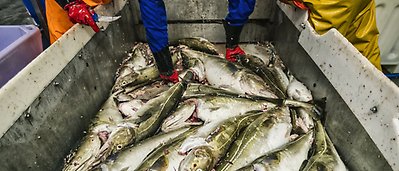
In a study published in Proceedings of the National Academy of Sciences (PNAS), the cultural landscapes of Kristianstads Vattenrike, Sweden is hailed as an example of successful way to govern a social-ecological system. Photo: Biosfärkontoret, Kristiandstad
Conservation
Five factors for successful management of natural capital
Study in PNAS teases out strategies for successful governance, for both people and ecosystems
- Study based on work in cultural landscapes in Kristianstad, Sweden, the Great Barrier Reef in Australia and fisheries of the Southern Ocean
- Flexible partnerships that are tied together by bridging organizations have overall positive effects on natural capital
- Adaptive management must be designed to suit the place and the people
Flexibility, trust, visionary key individuals, bridging organizations and a holistic approach which takes into account the whole ecosystem and its multiple values and users: these are five key factors behind successful governance that enhance ecosystem services and enable actors to detect and respond to new challenges, like climate change.
This is shown in a new international study of "adaptive governance" based on three very different but well-studied initiatives around the world – cultural landscapes in Kristianstad, Sweden, the Great Barrier Reef in Australia and fisheries of the Southern Ocean.
Same same but different
The new study, published in the latest issue of the scientific journal Proceedings of the National Academy of Sciences (PNAS), concludes that the key to success in all these three areas is the adaptive and holistic approach to conservation and development.
Other key factors include management based on trust and flexible partnerships between government agencies, non-governmental organizations and resource users (fishermen, farmers, etc.).
Interestingly, the team of scientists found many similarities between these three areas, although they differ hugely in terms of size, and the number of actors and habitat types involved.
"We see the importance of key individuals and bridging organizations, trust and cooperation between authorities and local resource users, and a holistic approach which takes into account the whole ecosystem and its multiple values"
Lisen Schultz, lead author
Other centre researcher who contributed to the article are Carl Folke, Henrik Österblom and Per Olsson. The new article is part of a special PNAS issue on natural capital called "Nature as Capital," which is the result of a collaboration with Stanford University.
The special feature was led and edited by University of Minnesota economist Steve Polasky and Oregon State University ecologist Jane Lubchenco.
This special issue highlights striking accomplishments of various partnerships and shows how the science and practice of ecosystem services – the benefits nature provides – has matured.
Making sure the shoe fits
Natural capital can be defined as the world’s stocks of natural assets, including soil, air, water and all living organisms. It is from this natural capital that humans derive a wide range of benefits, often called ecosystem services. These include the food we eat, the water we drink and the materials we use for fuel, building materials and medicines.
Other less visible ecosystem services include climate regulation, natural flood defences, insects pollinating crops, and the nonmaterial benefits people obtain from ecosystems through recreation, and aesthetic experiences.
The researchers show that flexible partnerships that are tied together by bridging organizations have overall positive effects on natural capital, and also on society's ability to identify and respond to new challenges, such as climate change, eutrophication and pollution.
The article emphasizes that adaptive management must be designed to suit the place and the people, and that it must constantly evolve and adapt to changing conditions.
In the cultural landscapes of Kristianstads Vattenrike, Sweden, positive effects on natural capital include restoration of wetlands and sandy grasslands as well as enhanced access to recreation and education.
In the Great Barrier Reef the marine national park increased its non-fishing areas from 5 to 33 % entailing increased abundance and size of fish as well as decrease of coral-eating starfish outbreaks. In the Southern Ocean, the adaptive governance approach lead to increased quota for licenced fisheries and reduced mortalities of seabirds.
Further, the article compares the three adaptive governance initiatives with other conservation efforts, like Natura 2000 in Europe, lobster fisheries in the Gulf of Maine, and the Common Fisheries Policy in Europe.
"In contrast to these efforts, we found that the adaptive governance cases developed better capacity to manage multiple ecosystem services and respond to ecosystem-wide changes with visible positive outcomes on natural capital," concludes Lisen Schultz.
CITATION
Schultz, L., Folke, C. Österblom, H., Olsson. P. 2015. Adaptive governance, ecosystem management, and natural capital. Proceedings of the National Academy of Sciences (PNAS).
Lisen Schultz's research aims at deepening understanding of conditions and strategies that enable resilience-based management of landscapes and seascapes. Her work focuses on the role of bridging actors, who catalyze collaboration and learning across levels and sectors in adaptive co-management. Most of her research is carried out in UNESCO biosphere reserves.







